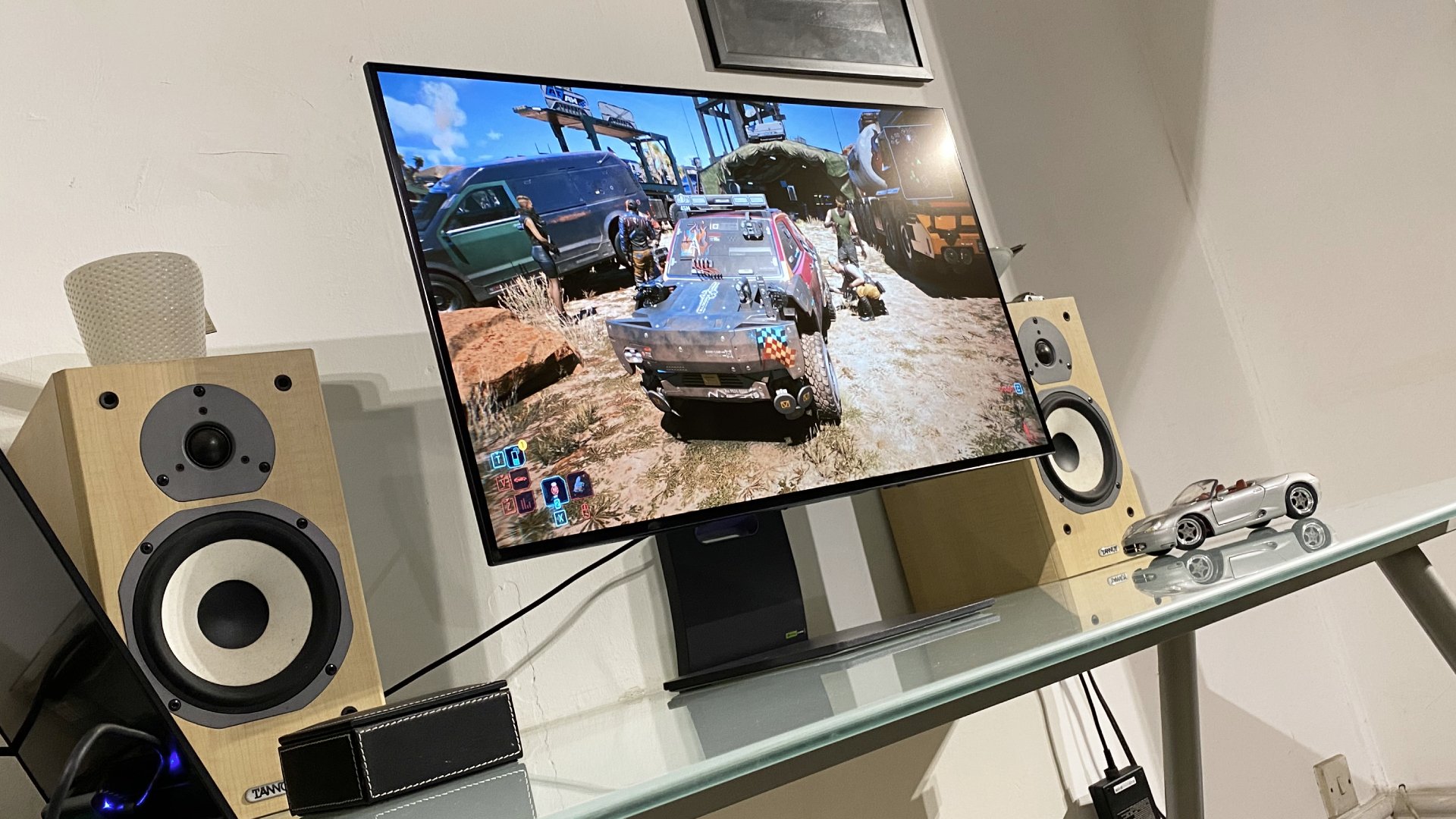Our Verdict
LG has nailed it with this 32-inch 4K OLED gaming monitor. It's clearly, if only marginally, best in class. And that's against some truly stellar gaming panels.
For
- Improved WOLED brightness
- HDR sizzle
- 240Hz refresh
Against
- Huge price tag
- Matte panel coating
- No USB-C
PC Gamer's got your back
The new LG UltraGear 32GS95UE is not perfect. And yet it does a pretty comprehensive job of blowing every existing 32-inch 4K gaming monitor based on Samsung's QD-OLED panel tech into last month. Wait, make that last year.
The thing is, LG's take on the high-refresh 4K OLED gaming monitor riff isn't on a totally different level to those QD-OLED panels. In fact, it's very similar. But it is undeniably and unambiguously—even if ultimately pretty marginally—better. Hold those thoughts.
On paper, the LG UltraGear 32GS95UE is very similar to the likes of, say, the Alienware 32 AW3225QF, Asus ROG Swift OLED PG32UCDM, Samsung Odyssey G8 OLED G80SD, or MSI MPG 321URX. Whether it's the 32-inch panel size, 4K native resolution, 240 Hz refresh or 0.03 ms response performance, LG's OLED monitor looks like a dead ringer for that quartet of Samsung QD-OLED panels.
LG's 275 nit full-screen brightness rating is actually a little brighter. But that's a "typical" rating, with LG rating the panel at 250 nits "minimum". If it's a close run thing in theory, full-screen brightness is the one area where you might have come into this review with some doubts.
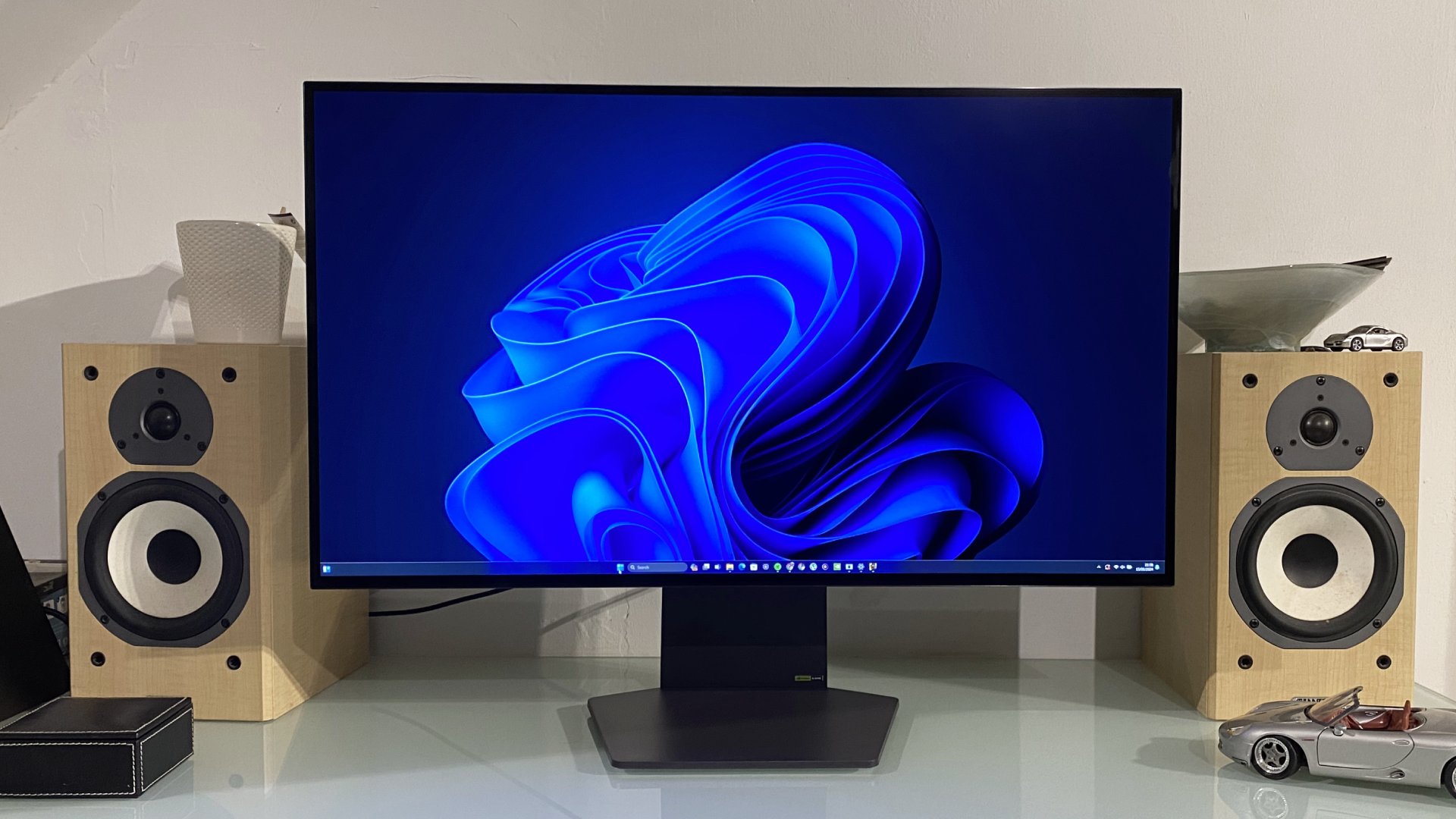
Screen size: 32-inch
Resolution: 3,840 x 2,160
Brightness: 275 nits full screen, 1,300 nits max HDR
Color coverage: 98.5% DCI-P3
Response time: 0.03 ms
Refresh rate: 240 Hz (480 Hz 1080p)
HDR: DisplayHDR 400 True Black
Features: LG WOLED panel, Adaptive Sync, 1x DisplayPort 1.4, 2x HDMI 2.1
Price: $1,399 | £1,300
That's because this LG monitor inevitably uses the WOLED panel technology from sister company LG Display, the subsidiary of the sprawling LG empire that makes the actual OLED panels which go into everything from monitors like this to TVs, phones, watches, cars and the rest. And the one metric by which LG WOLED tech has fallen short previously, is full screen brightness.
If that's now at least on par with Samsung QD-OLED, this particular 32-inch 4K beauty has something none of the Samsung-powered competition currently offers, namely a Dual Mode functionality which uses pixel doubling to essentially run as a native 1080p panel but with an extremely quick 480 Hz refresh rate.
The idea is to provide the best of both worlds. You get both full 4K capability for ultrasharp and detailed image quality in games and which also benefits things like font rendering day to day, plus the ability to run 1080p at sky-high frame rates and ultra-low latency, just without the need to interpolate a 1080p image over a 4K panel. Doing the latter always ends up looking soft and a little blurry compared to a native 1080p monitor of the same size. What's not to like?
Other highlights include 98.5% coverage of the DCI-P3 digital cinema color space, Nvidia G-Sync compatibility, DisplayHDR True Black 400 certification, plus HDMI and DisplayPort connectivity along with a USB-A hub. In fact, really the only notable omission is a USB-C port.
Depending on your point of view, that may or may not be an issue. But at this extremely lofty price point, it hardly seems like an onerous expectation. Moreover, it's something of a pity given that the 4K resolution and pixel density, not to mention mostly excellent color accuracy, means this monitor does such a stellar job of bridging the void between gaming and productivity.
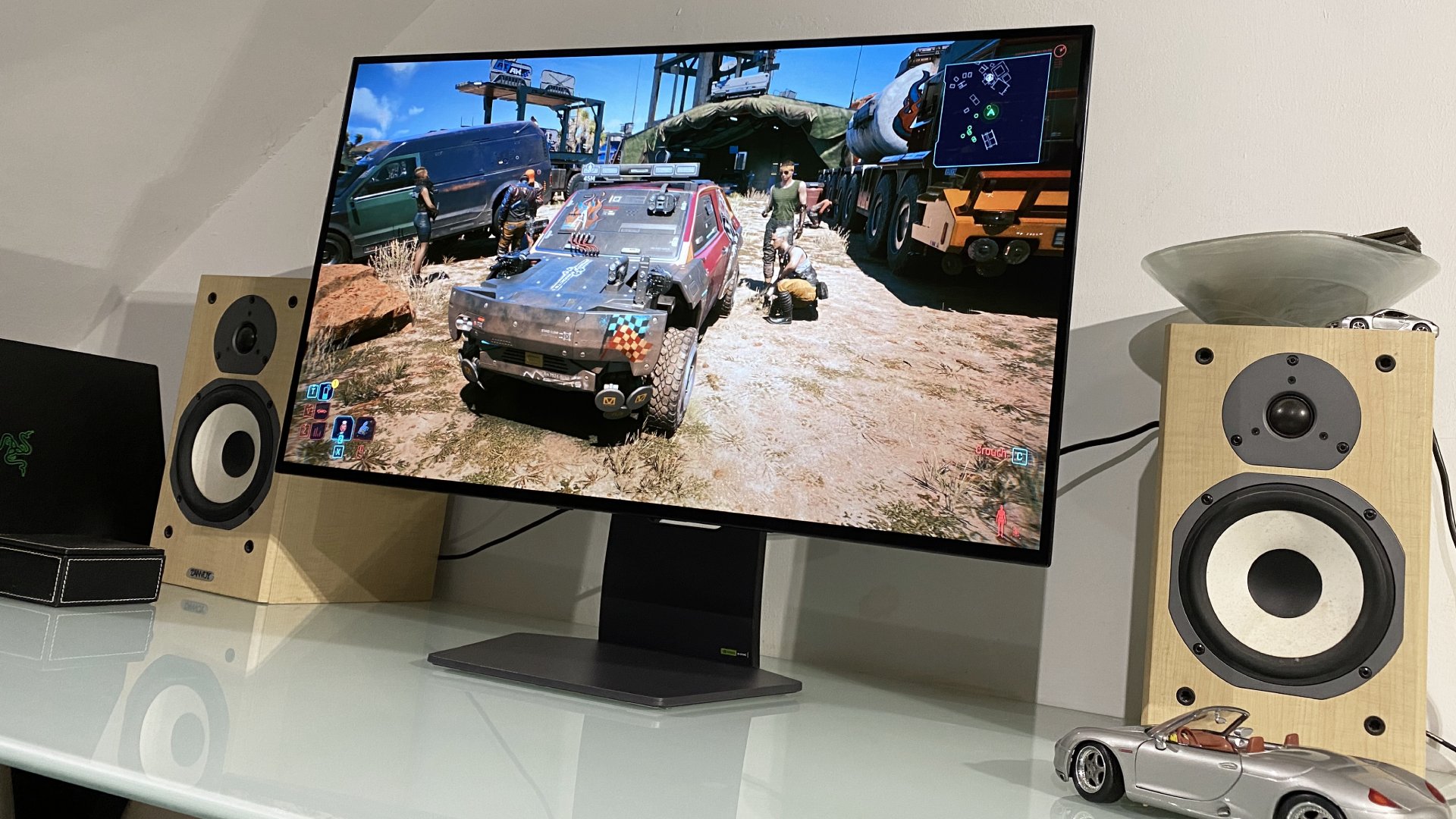
It's not quite up there with Samsung's Odyssey monitor for sheer physical desirability.
Put simply, it would be nice to able to have both a proper gaming rig hooked up via DisplayPort and a laptop running in single-cable mode and picking up a desktop keyboard and mouse, all courtesy of USB-C. Odds are, if you can afford this monitor and you're into gaming, you'll also have a laptop to hook up via USB-C.
With that USB-C themed pico-rant squared away, that's the pre-game considerations covered off. Oh, with the exception of design and ergonomics. In truth, that aspect of the LG UltraGear 32GS95UE is somewhat forgettable, which is why I almost did forget. The slim bezels on all four sides of the panel ensure a slick, contemporary look, while the broad stand adds a touch of individuality. And it's certainly well put together and offers plenty of adjustability including rotation into portrait mode, if that's your thing. But it's not quite up there with Samsung's Odyssey monitor for sheer physical desirability.
But what, then, of the actual image quality? I'll tease you no longer. Here's why this LG is better than those Samsung QD-OLEDs. First, it doesn't suffer from the slightly warm color balance of those 4K QD-OLED monitors. Second, the panel doesn't turn slightly grey in bright ambient light, again as QD-OLED panels do and thus marginally detracting from contrast performance and black levels. Third it does or doesn't do all that while absolutely matching if not bettering the QD-OLED competition for full-screen brightness.
Now, those factors may not immediately seem like an absolutely overwhelming roll call of advantages. But we're talking about very expensive displays, so even a small edge matters. More to the point, those wins come with no discernible downsides. In other regards, this monitor is at least as good.
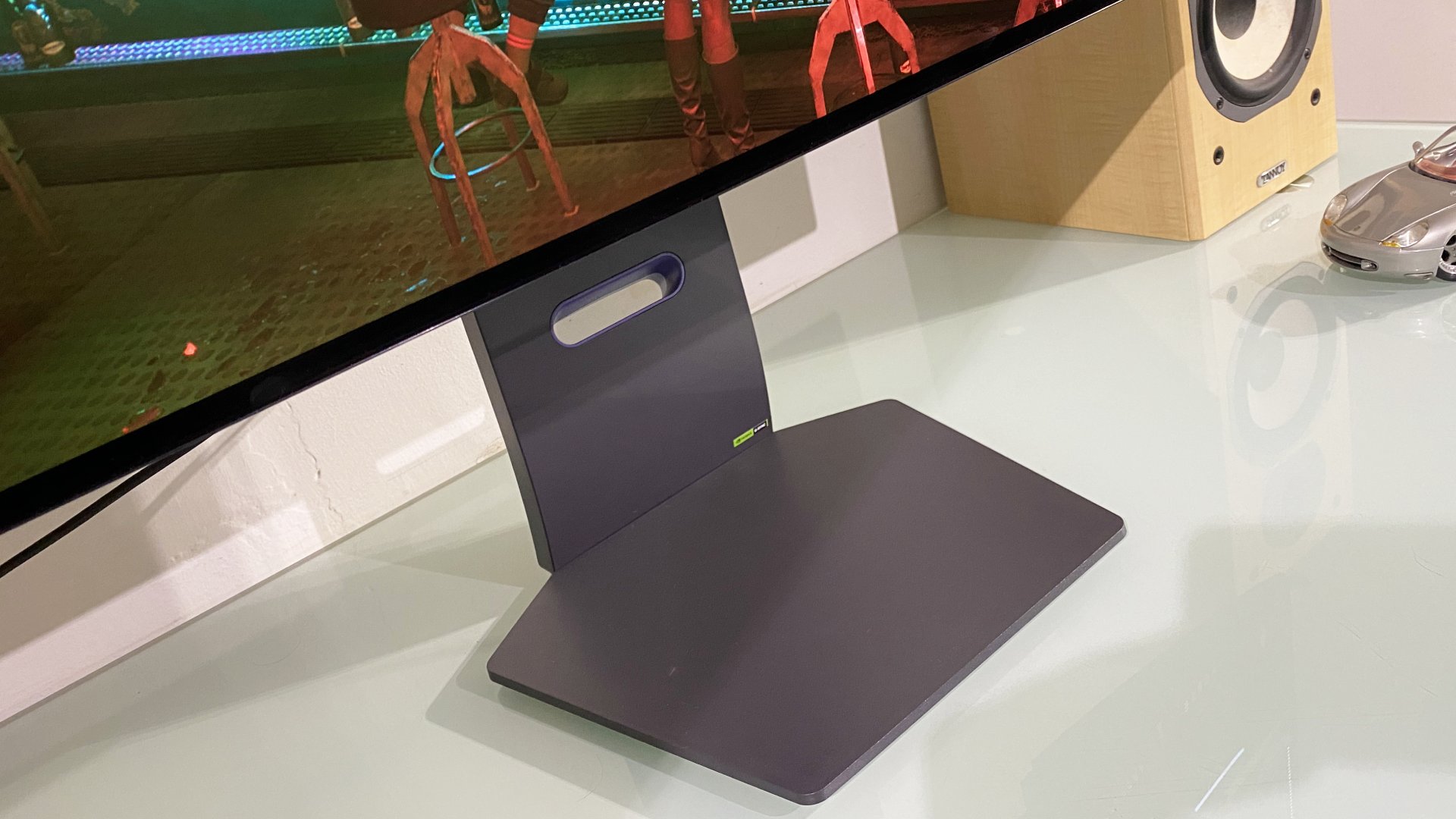
The net result is a ridiculously enjoyable monitor to use for just about anything. The best bit is probably the HDR performance. There's a particular sequence in Cyberpunk 2077 that's a great test of peak brightness. It's an underground bar scene, mostly dark and moody. But the actual bar is surrounded by banks of neon lights. And they absolutely, positively sizzle on this monitor. It's the most impressive rendering I've yet seen.
HDR video looks stellar, too, and really delivers on the whole High Dynamic Range premise. The contrast, the bright highlights right next to inky darkness, these are things that LCD monitors with local dimming just can't compete with.
They can't compete with the speed, either. Pixel response is essentially a solved issue with these OLED monitors. It's questionable whether you'd be able to tell the difference were they any faster. Of course, the 240 Hz refresh ensures very low latency, provided you have a GPU powerful enough to drive this monitor at high frame rates. And you can improve can lower the latency yet further with the aforementioned 1080p mode.
Quick side note on that subject: The Dual Mode feature works slickly. There's a button on the bottom bezel you hit to jump between 4K@240 Hz and 1080p@480 Hz modes. The screen does blank out and the display will resync with your PC, but it happens fast enough. So, the big question is whether you'd mistake the 1080p mode for native 1080p on a 32-inch monitor.
The answer is no, you wouldn't. For sure, it looks a bit better than 1080p interpolated on a 4K 32-inch panel in the usual manner. And, in game, the experience looks closer to native than it does on the Windows desktop, the latter being really pretty fugly. But there's still a softness that belies any true pretence at native rendering. So, it's a welcome enough feature viewed as an extra. It just doesn't quite deliver on the dual-native premise.

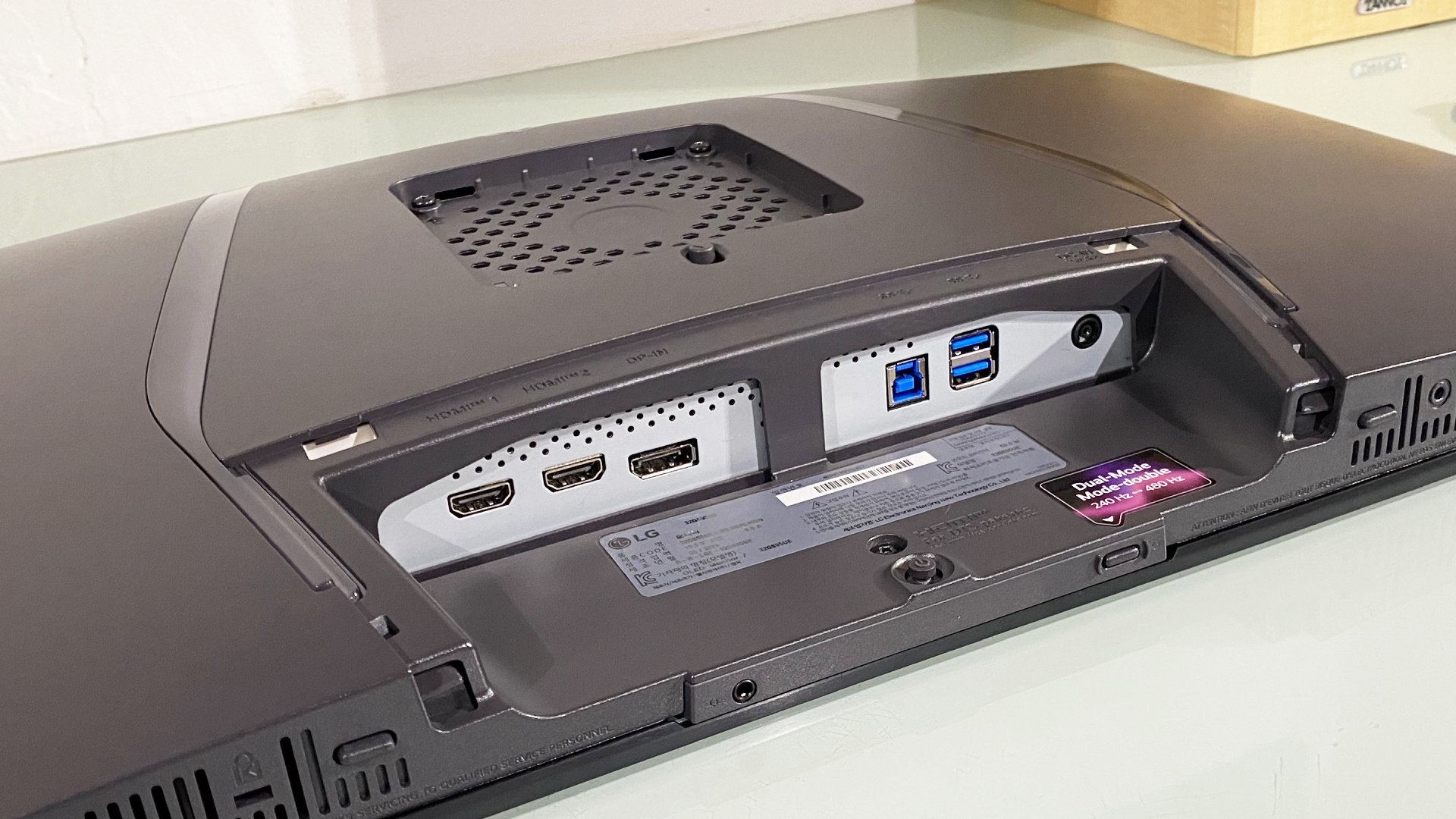
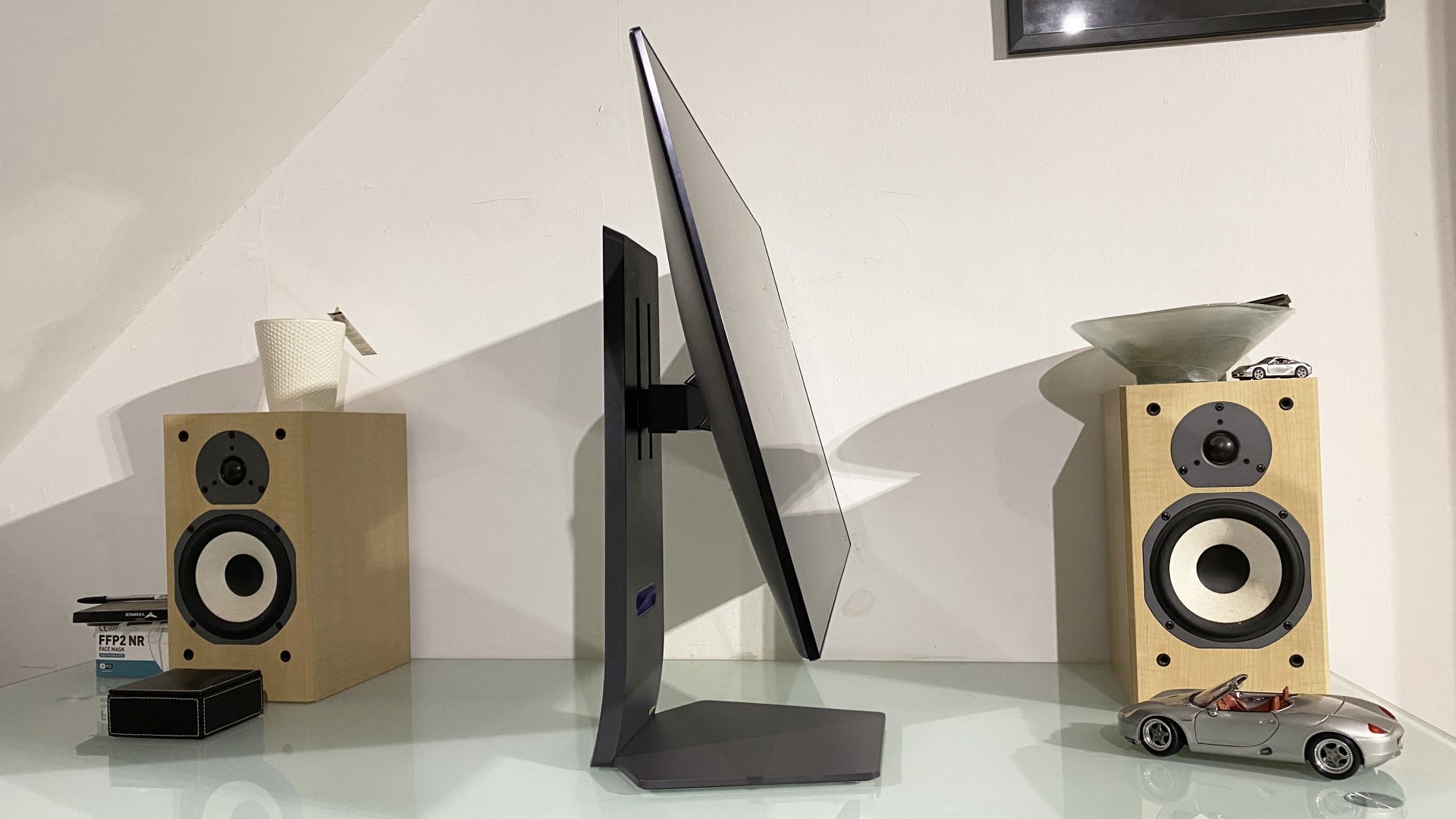
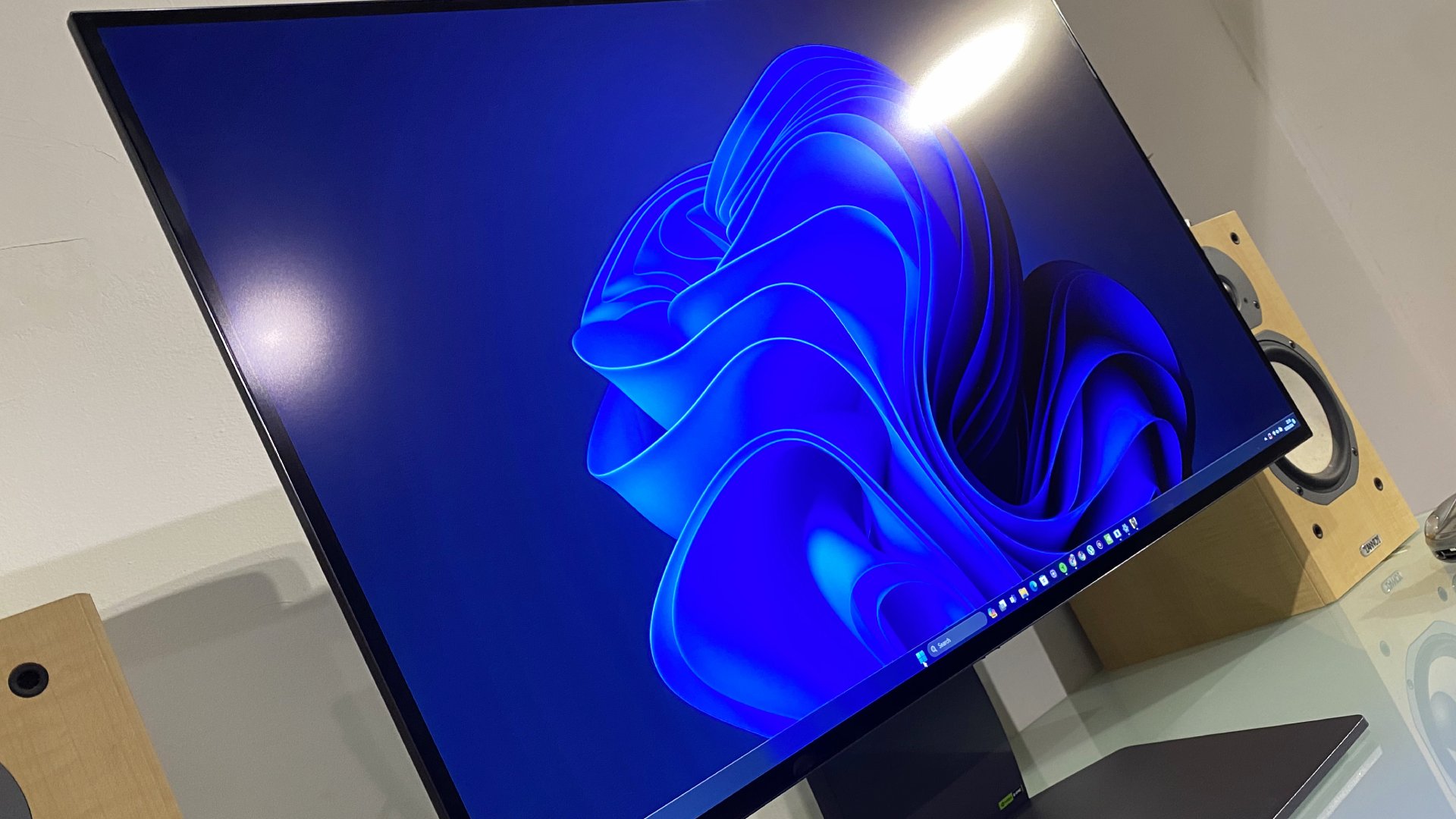
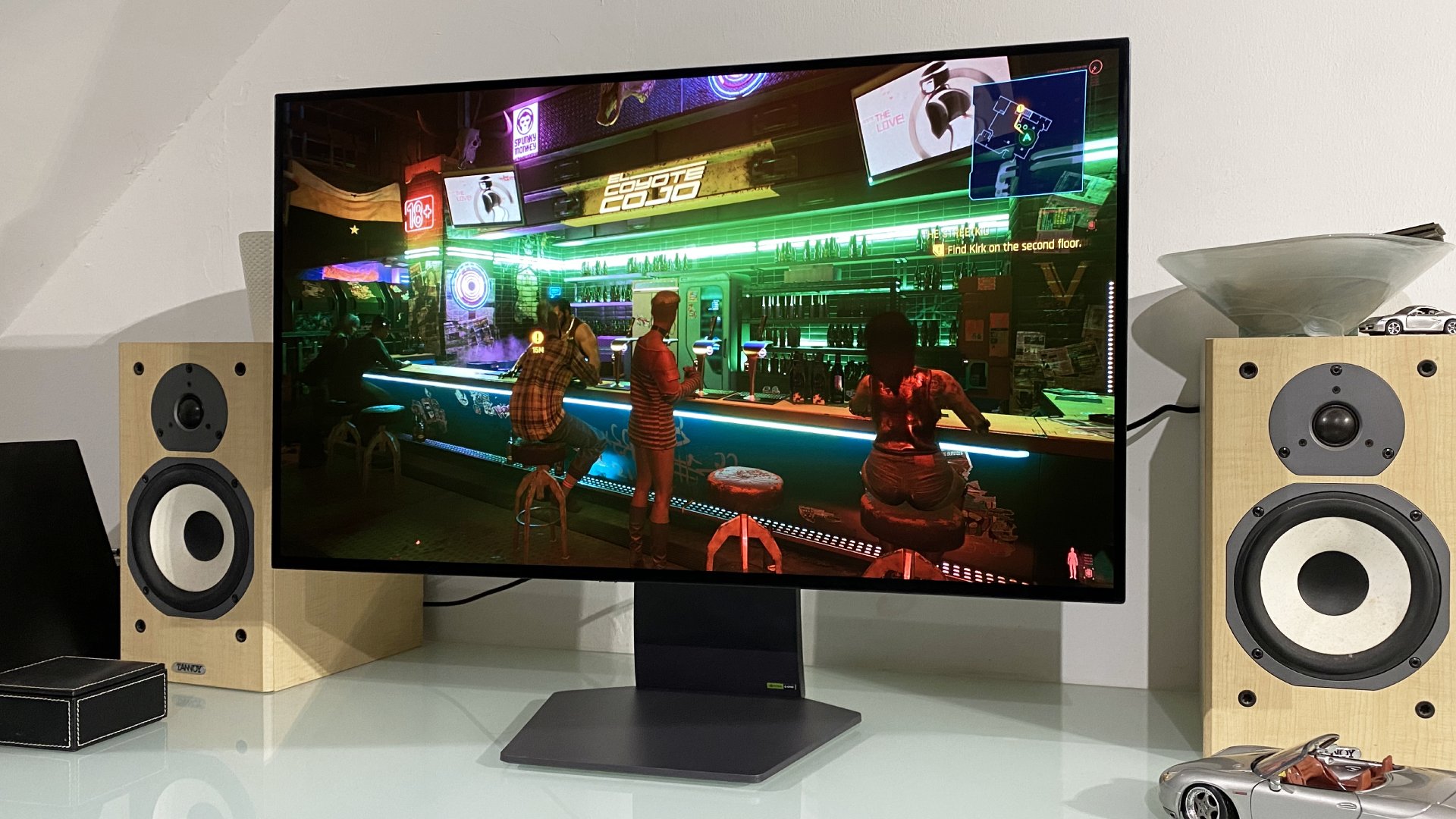
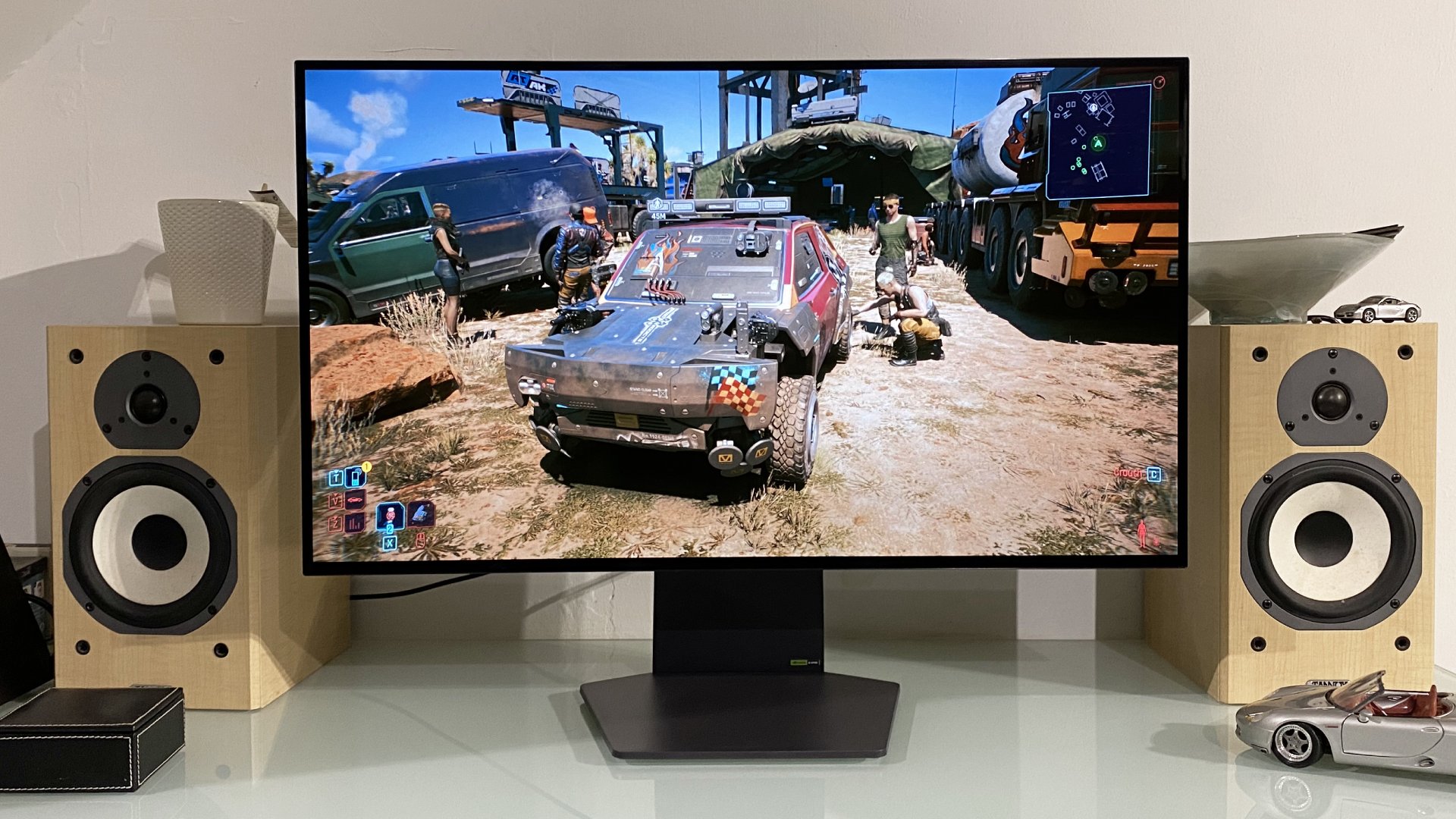
Were this monitor glossy it would probably look even better. But as it is, it's still my new favorite OLED monitor.
Oh, and one last thing. Throughout all of this, we haven't touched on something that's typically fairly critical on an OLED gaming panel, the panel coating. Horror of horrors, the LG UltraGear 32GS95UE doesn't have a glossy anti-glare coating, something that normally I'd say was a substantial disadvantage on an OLED monitor.
But somehow, the matte coating is just fine. Is it a little "glossier" than a typical matte finish? Possibly. But either way, the sense of contrast and inky black levels, not to mention highlight dazzle is barely, if at all, compromised. Consider my glossy-panel prejudices largely, if not quite comprehensively, dismantled. Oh, okay, were this monitor glossy it would probably look even better. But as it is, it's still my new favorite OLED monitor.
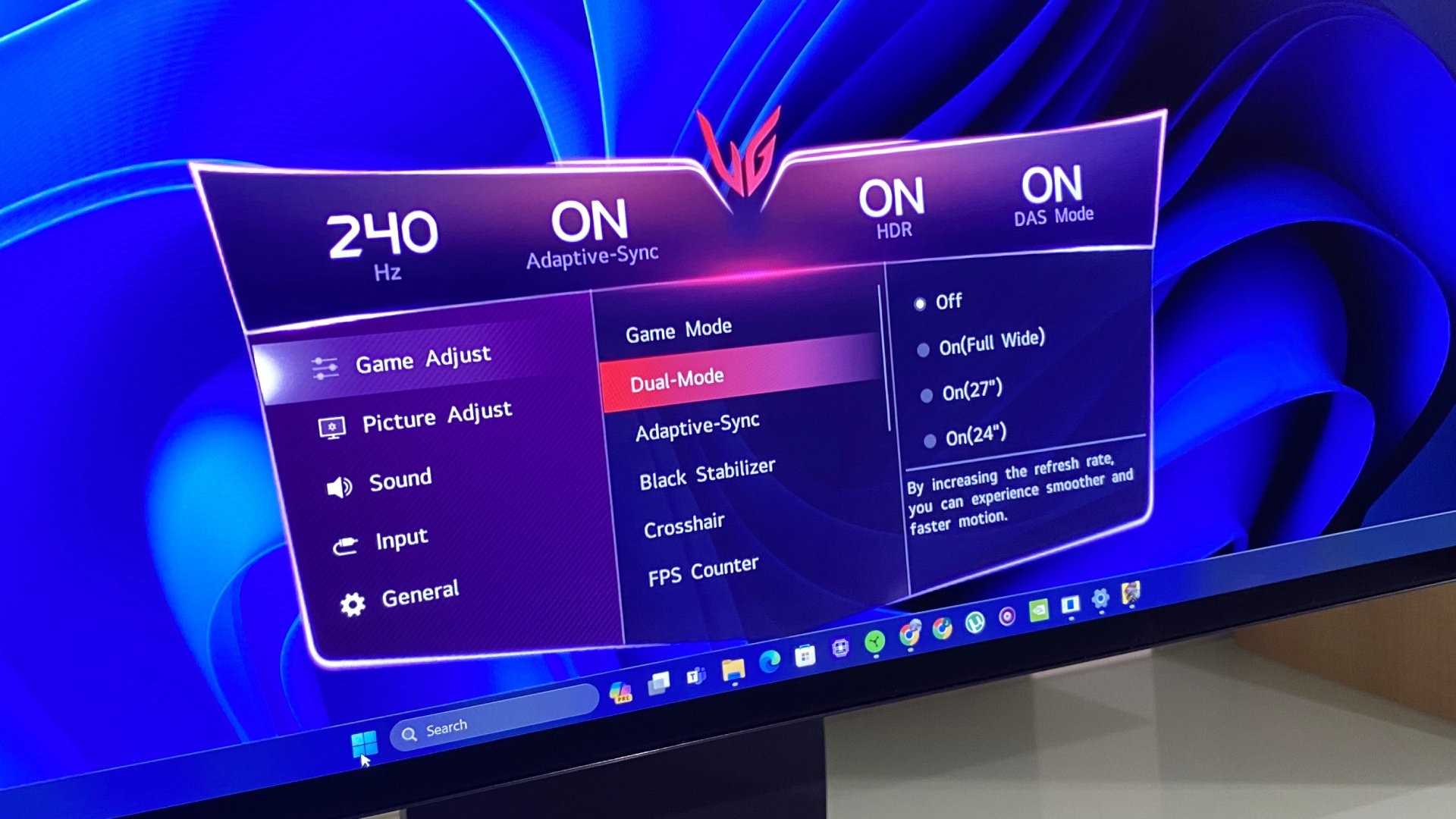
A shout out, too, to both full-screen brightness and SDR content handling. Regarding the former, you can set the panel at either constant full-screen SDR brightness around 250 nits or allow it to vary according to how much of the screen is lit up. The latter has been a bit of a distraction on previous monitors with LG OLED panels.
However, this one is bright enough, full-screen, that it doesn't dim infuriatingly if you open up a large white app window, like a text doc or webpage. In fact, I think it works best in variable mode, which allows it to go that bit brighter most of the time. LG has also managed the calibration of SDR content in HDR mode very nicely. So, you can realistically run this thing in HDR mode all the time. Short of pro-level content creation, there's no need to jump between modes.
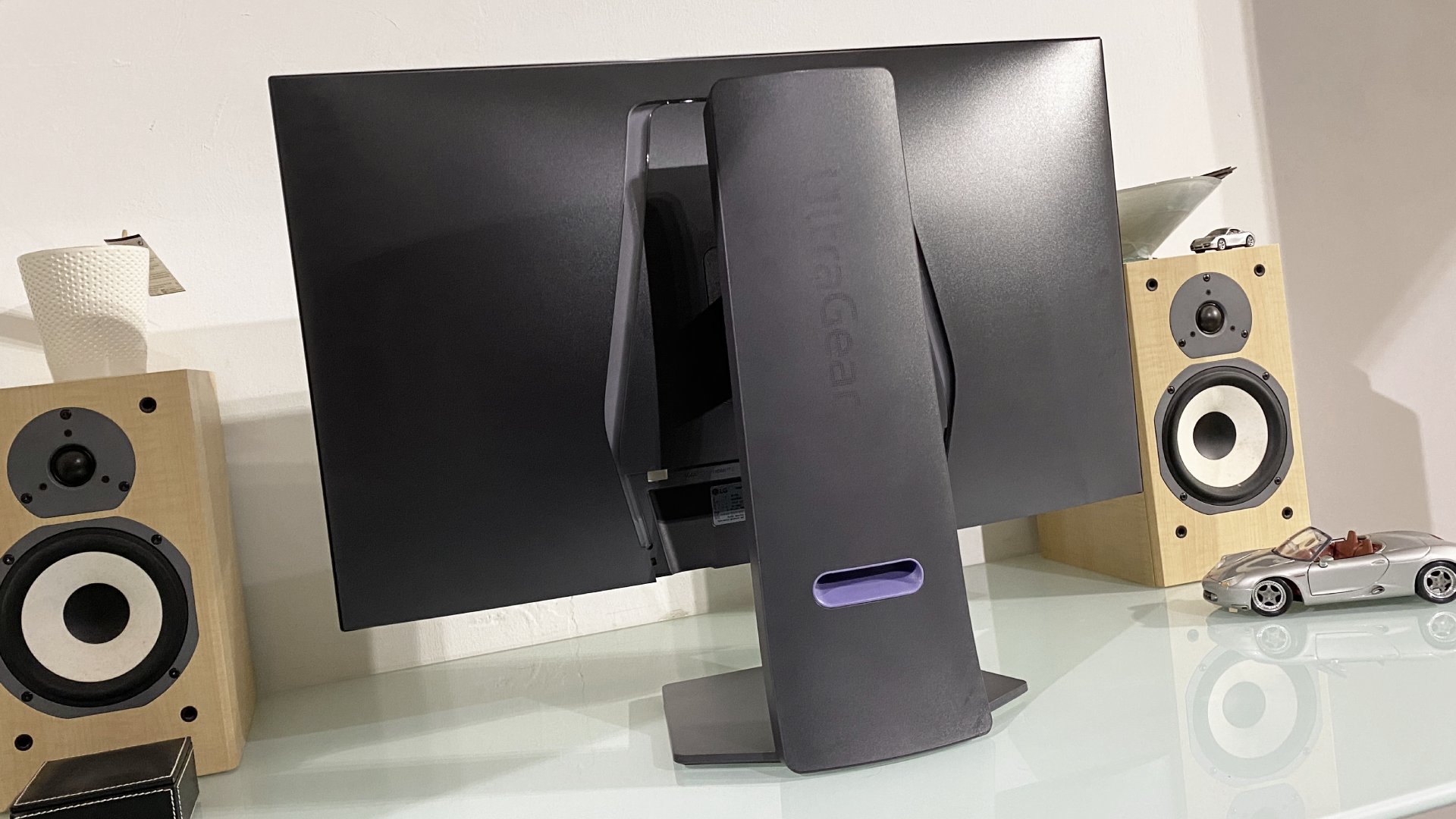
But wait, one definitely last thing. Font rendering is just fab on this panel. Again, it's down to the 4K native on a relatively small 32-inch panel. The pixel density is plenty to cover up the non-standard subpixel structure of these OLED panels compared to conventional RGB LCD monitor.
✅ You want the best 4K gaming OLED out there: LG has done it. This monitor is better than the entire Samsung QD-OLED horde.
❌ You want value for money: At $1,400, this is a ridiculously pricey panel, even taking into account how good it undoubtedly is.
As for negatives, if you really must insist the panel color balance has the very slightest green tinge. It's very minor and not as apparent as the overly warm skew of those QD-OLED alternatives. But for the record, it is there.
All of which means this is one heck of a monitor. It's an HDR killer, the SDR handling and brightness is good, the pixel response is ridiculous and the Dual Mode is a nice little extra even if it isn't quite as advertised. The only thing missing is that USB-C interface, which I can forgive. What's harder to wish away, however, is the price.
This is definitely my favorite 4K OLED monitor. But does that justify the monstrous $1,400 price? After all, you can get a 32-inch 4K OLED for $900, fully $500 less. In the end, it's a personal call. If I could easily afford the extra money, I'd cough up. But if the added $500 was any kind of stretch, I'd be in quite the quandary. I really would.
LG has nailed it with this 32-inch 4K OLED gaming monitor. It's clearly, if only marginally, best in class. And that's against some truly stellar gaming panels.

Jeremy has been writing about technology and PCs since the 90nm Netburst era (Google it!) and enjoys nothing more than a serious dissertation on the finer points of monitor input lag and overshoot followed by a forensic examination of advanced lithography. Or maybe he just likes machines that go “ping!” He also has a thing for tennis and cars.
